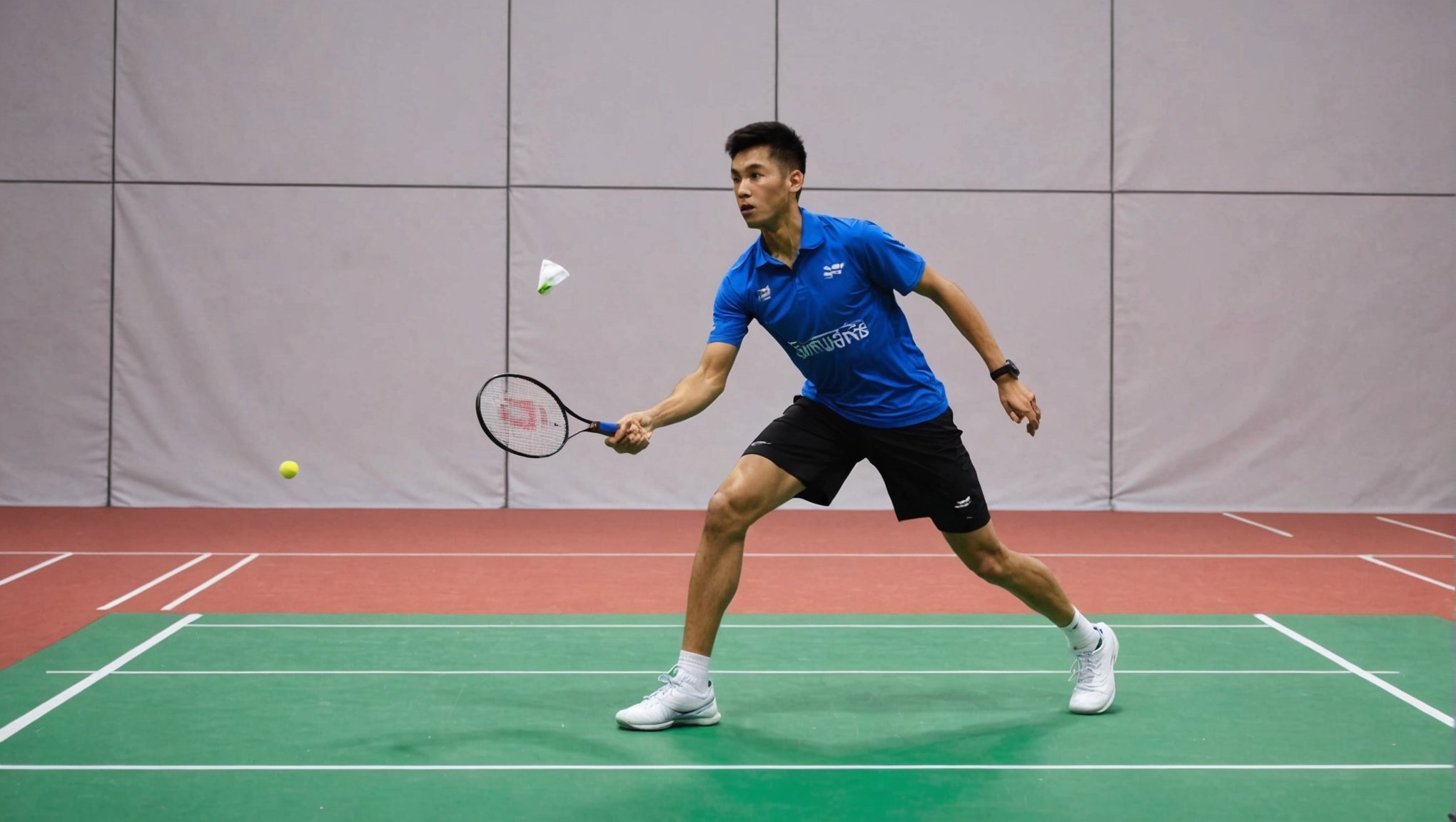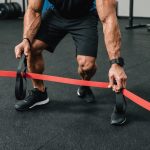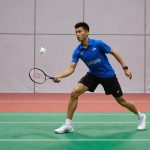Footwork defines a badminton player's ability to cover the court effectively. For UK players looking to improve their game, enhancing footwork can lead to significant performance gains. Quick and agile movements are essential for reaching those challenging shots and maintaining balance. This guide offers practical tips to refine your technique, boost your speed, and ensure you're always one step ahead of your opponent. Discover how small adjustments can lead to substantial improvements in your court coverage.
Importance of Footwork in Badminton
In the fast-paced world of badminton, footwork is undeniably crucial. It dictates a player's ability to maintain court coverage and enhances overall player agility. Effective footwork allows players to reach the shuttlecock swiftly, ensuring they are always in an optimal position to return shots. This agility not only improves performance but also provides a competitive edge.
Also read : Unlocking Community Connections: Proven Strategies for UK Sports Clubs to Engage Locally
Good footwork is pivotal for maintaining balance and executing precise movements. It enables players to transition smoothly between offensive and defensive plays, adapting quickly to the game's dynamic nature. A player with refined footwork can cover the entire court efficiently, reducing the risk of being caught off guard by unexpected shots.
Moreover, proper footwork is instrumental in injury prevention. By ensuring that movements are controlled and balanced, players minimise the risk of strains or sprains. It supports the body's natural mechanics, distributing stress evenly and preventing overexertion.
Also to see : Creative Approaches to Instill Sportsmanship in Children Participating in UK Sports Leagues
In summary, mastering footwork in badminton is essential for both performance enhancement and injury prevention. It ensures players remain agile, responsive, and resilient throughout the match, ultimately contributing to a more successful and enjoyable playing experience.
Key Techniques for Effective Footwork
In badminton, mastering footwork techniques is vital for enhancing performance. Fundamental techniques such as the split step and the lunge are crucial for quick and efficient movement. The split step prepares players to react swiftly, while the lunge allows them to reach distant shots with power and precision.
Importance of Positioning and Balance
Positioning is the cornerstone of effective footwork. Maintaining a central position on the court ensures that players can reach any part of the court with minimal effort. Balance is equally important; it allows players to transition smoothly between shots, maintaining control and precision.
Tips for Maintaining Speed and Control
To maintain speed and control, players should engage in regular footwork drills and agility training. Drills such as ladder exercises and shuttle runs enhance quickness and coordination. Consistent practice helps players develop muscle memory, allowing them to move instinctively during matches.
- Focus on short, quick steps to adjust position rapidly.
- Keep your centre of gravity low for better stability.
- Practise changing directions swiftly to adapt to opponents' shots.
By integrating these techniques into training routines, players can significantly improve their agility and responsiveness on the court.
Drills to Enhance Footwork Speed
Incorporating footwork drills into your training regime is essential for improving speed and agility on the badminton court. These exercises are designed to refine your movements and boost your overall performance.
Introduction to Various Footwork Drills
Footwork drills like the ladder drill and shuttle run are fundamental. The ladder drill enhances quick foot movements and coordination, while the shuttle run focuses on speed and endurance. Both exercises are crucial for developing the agility needed to cover the court efficiently.
Step-by-Step Guide for Executing Each Drill
-
Ladder Drill: Position a ladder flat on the ground. Step in and out of each rung quickly, ensuring your movements are light and controlled. Focus on speed without sacrificing form.
-
Shuttle Run: Set markers at various distances. Sprint to each marker and return to the start, focusing on quick turns and maintaining a low centre of gravity.
Recommended Frequency and Duration for Practice
For optimal results, incorporate these drills into your routine 3-4 times a week. Each session should last 20-30 minutes, allowing for adequate rest between sets. Consistent practice will lead to significant improvements in footwork speed and court coverage.
Agility Exercises for Badminton Players
In badminton, agility exercises play a pivotal role in enhancing a player's quickness and responsiveness on the court. These exercises are specifically designed to boost overall badminton fitness, providing players with the necessary skills to move swiftly and efficiently. By incorporating plyometric training, athletes can improve their explosive power, which is crucial for quick directional changes and rapid movements.
Overview of Agility Training Benefits
Agility training enhances a player's ability to react promptly to an opponent's shots, reducing the time taken to reach the shuttlecock. It improves coordination, balance, and speed, allowing players to maintain a competitive edge. Regular agility exercises also contribute to better endurance, enabling players to sustain high performance throughout a match.
Specific Exercises to Improve Quickness
- Cone Drills: Set up cones in various patterns. Sprint between them, focusing on sharp turns and acceleration.
- Plyometric Jumps: Perform box jumps or squat jumps to increase leg power and speed.
- Lateral Shuffles: Move side-to-side quickly, maintaining a low stance to improve lateral movement.
Integration into Regular Training Routines
Integrate these exercises into your training sessions 2-3 times a week. Consistency is key to developing agility, ensuring players remain agile and responsive during matches.
Common Footwork Mistakes to Avoid
In badminton, avoiding footwork mistakes is crucial for player improvement. Many players struggle with training errors that hinder their performance on the court.
One frequent error is the failure to maintain a low centre of gravity. This mistake can lead to instability and slower reaction times. Players should focus on bending their knees slightly and keeping their weight balanced to improve agility and control.
Another common issue is taking large, inefficient steps. This can result in slower movement and increased energy expenditure. Instead, players should practice taking short, quick steps to enhance their speed and efficiency.
Additionally, improper positioning often leads to missed opportunities. Players may find themselves out of position, unable to reach the shuttlecock effectively. Maintaining a central position and staying alert to the shuttlecock's direction are essential strategies for improvement.
To correct these pitfalls, consistent training and feedback are vital. Incorporating drills that emphasise balance, speed, and positioning will help players refine their footwork. By focusing on these aspects, players can significantly enhance their performance and avoid common footwork errors.
Insights from Expert Badminton Coaches
Gleaning expert insights from renowned UK badminton coaches can significantly enhance player development. These coaches emphasise the importance of personalised training approaches tailored to individual player needs. By focusing on specific strengths and weaknesses, players can maximise their potential and improve their overall game.
Coaching tips often highlight the necessity of regular feedback and self-assessment. Coaches suggest that players should actively seek constructive criticism to identify areas for improvement. This feedback loop is crucial for refining techniques and strategies, enabling players to adapt and excel in various match situations.
Renowned coaches also stress the significance of self-assessment in training. Players are encouraged to evaluate their performance regularly, setting realistic goals and tracking progress. This practice fosters a deeper understanding of personal capabilities and areas that require additional focus.
Incorporating these insights into training routines can lead to substantial improvements in performance. By adopting a tailored approach and valuing feedback, players are more likely to develop the skills necessary to succeed on the court.
Resources for UK Badminton Players
For badminton enthusiasts in the UK, numerous badminton clubs provide excellent opportunities to hone skills and connect with fellow players. Notable clubs like Surrey Smashers and Bristol Jets offer structured training sessions and competitive matches. These clubs are ideal for players seeking regular practice and community engagement.
In addition to clubs, players can benefit from local training resources. Workshops and training sessions often cater to different skill levels, providing tailored guidance. For instance, the All England Badminton Club frequently hosts workshops focusing on advanced techniques and strategies, making it a valuable resource for ambitious players.
Online platforms also play a crucial role in continuous learning. Websites like Badminton England offer a wealth of instructional videos and articles, covering everything from basic footwork to advanced tactical play. Engaging with online communities, such as forums and social media groups, allows players to share experiences, seek advice, and stay updated on the latest trends in UK badminton.
By leveraging these resources, players can enhance their skills, gain insights from experienced coaches, and become part of a vibrant badminton community.
Using Technology to Monitor Footwork
Incorporating sports technology into badminton training can dramatically enhance a player's performance. Wearable devices, such as smart shoes and fitness trackers, provide invaluable insights by monitoring various aspects of footwork. These gadgets track metrics like speed, distance, and even balance, offering a comprehensive view of a player's movements.
Training apps complement these devices by analysing the collected data. They offer personalised feedback and suggest specific exercises to target weaknesses. For instance, if a player's balance is identified as an area needing improvement, the app might recommend specific drills to address this. This targeted approach ensures that training is both efficient and effective.
Interpreting the data from these technologies is crucial for improving performance tracking. Players and coaches can identify patterns, such as frequent missteps or inefficient movements, and adjust training accordingly. By focusing on these areas, athletes can refine their technique and enhance their overall agility on the court.
The integration of technology in sports not only optimises training but also empowers players to take control of their development, making informed decisions to elevate their game.
Incorporating Footwork into Match Play
Incorporating effective footwork techniques into match play is essential for a successful match strategy. Understanding how to apply these techniques during competitive play can significantly enhance a player's performance.
One key strategy is to anticipate your opponent’s movements. By observing their body language and shot patterns, players can predict where the shuttlecock will land and position themselves accordingly. This proactive approach allows players to maintain an advantageous position on the court, ensuring they are ready to respond swiftly to any shot.
Real-life examples of successful footwork in competitive play highlight the importance of these techniques. Professional players often demonstrate exceptional agility and precision, seamlessly transitioning between shots with minimal effort. Their ability to anticipate and react quickly is a testament to the effectiveness of incorporating footwork into their match strategy.
By focusing on footwork application, players can improve their court coverage and maintain control during intense rallies. This not only increases their chances of winning points but also reduces fatigue by minimising unnecessary movements. Ultimately, mastering footwork in match play can provide a significant competitive edge, enabling players to outmanoeuvre opponents and execute their game plan with confidence.
Continuous Improvement and Goal Setting
In the realm of badminton, performance improvement hinges on setting realistic and achievable training goals. These goals should focus on specific aspects of footwork, such as speed, agility, or balance, ensuring that players can target their development effectively.
Tracking progress over time is crucial for sustained player development. By regularly assessing their abilities, players can identify areas of improvement and adjust their training regimen accordingly. This process not only highlights advancements but also brings attention to persistent challenges that need further attention.
Maintaining motivation and focus during training can be challenging. However, setting short-term goals alongside long-term objectives can keep players engaged. Celebrating small victories along the way reinforces positive behaviour and encourages continued effort.
To further enhance motivation, players should seek feedback from coaches or peers. Constructive criticism provides valuable insights and helps refine techniques. Additionally, visualising success and setting reminders of personal achievements can inspire players to push through difficult training sessions.
Ultimately, a structured approach to goal setting and progress tracking fosters a culture of continuous improvement, empowering players to reach their full potential on the court.













